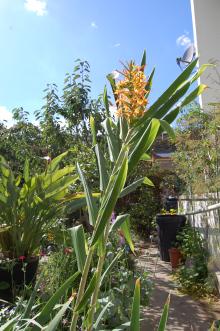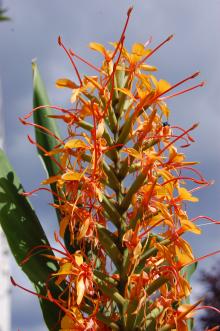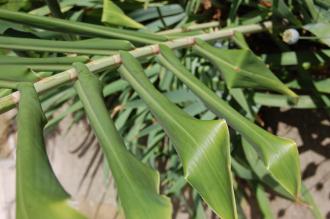
Hedychium coccineum ‘Tara’ (31/08/2014 Walworth, London)
Position: Full sun to partial shade
Flowering period: Late summer
Soil: Moist, well drained
Eventual Height: 2m
Eventual Spread: 1m
Hardiness: 7b, 8a, 8b, 9a, 9b, 10a, 10b
Family: Zingiberaceae
Hedychium coccineum ‘Tara’ is a semi evergreen herbaceous perennial with an upright habit. Its mid/ dark green leaves are lance shaped with entire margins, appear opposite off a pseudostem, up to 40cm long and 5cm broad. Its fragrant orange flowers are trumpet shaped and borne in terminal racemes which are up to 25cm long. Its roots are rhizomes which aids its slow spread.

Hedychium coccineum ‘Tara’ Flower (31/08/2014 Walworth, London)
Hedychium coccineum, commonly known as Ginger Lily, Orange Bottlebrush Ginger or Red Butterfly Ginger, is native to the Himalaya region.
The etymological root of the binomial name Hedychium is derived from the Greek edanos meaning ‘sweet’ and xiwn meaning ‘snow’. Coccineum is from the Latin meaning ‘dyed scarlet’, in reference to the flower color of the species.
The landscape architect may find Hedychium coccineum ‘Tara’ useful as an upright flowering perennial with a tropical feel.
Ecologically, Hedychium coccineum ‘Tara’ flowers are attractive to pollinating insects.
The Royal Horticultural Society has given Hedychium coccineum ‘Tara’ their prestigious Award of Garden Merit in 1993.

Hedychium coccineum ‘Tara’ Leaf (31/08/2014 Walworth, London)
Hedychium coccineum ‘Tara’ prefers moist, fertile, well-drained soils. It tolerates most pH of soil.
Hedychium coccineum ‘Tara’ requires little maintenance.

